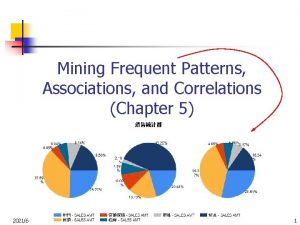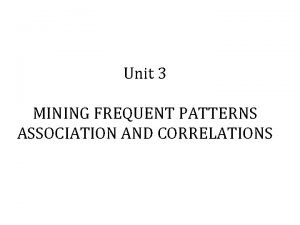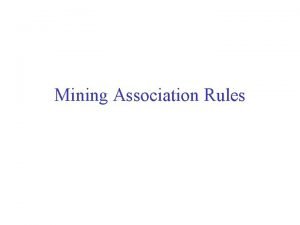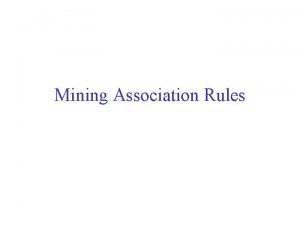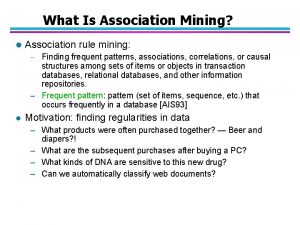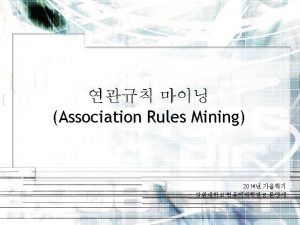Association Analysis 5 Mining Word Associations Mining word






- Slides: 6

Association Analysis (5) (Mining Word Associations)

Mining word associations (in Web) Document-term matrix: Frequency of words in a document “Itemset” here is a collection of words “Transactions” are the documents. Example: W 1 and W 2 tend to appear together in the same documents. Potential solution for mining frequent itemsets: Convert into 0/1 matrix and then apply existing algorithms –Ok, but looses word frequency information

Normalize First • How to determine the support of a word? • First, normalize the word vectors – Each word has a support, which equals to 1. 0 • Reason for normalization – Ensure that the data is on the same scale so that sets of words that vary in the same way have similar support values. TID W 1 D 1 2 D 2 0 D 3 2 D 4 0 D 5 1 W 2 W 3 W 4 W 5 20 0 0 1 2 2 30 0 0 1 10 1 0 2 Normalize

Association between words • E. g. How to compute a “meaningful” normalized support for {W 1, W 2}? • One might think to sum-up the average normalized supports for W 1 and W 2. s({W 1, W 2}) = (0. 4+0. 33)/2 + (0. 4+0. 5)/2 + (0. 2+0. 17)/2 =1 • This result is by no means an accident. Why? • Averaging is useless here.

Min-APRIORI • Use instead the min value of normalized support (frequencies). Example: s({W 1, W 2}) = min{0. 4, 0. 33} + min{0. 4, 0. 5} + min{0. 2, 0. 17} = 0. 9 s({W 1, W 2, W 3}) = 0 + 0 + 0. 17 = 0. 17

Anti-monotone property of Support Example: s({W 1}) = 0. 4 + 0 + 0. 2 = 1 s({W 1, W 2}) = 0. 33 + 0. 4 + 0. 17 = 0. 9 s({W 1, W 2, W 3}) = 0 + 0 + 0. 17 = 0. 17 So, standard APRIORI algorithm can be applied.
